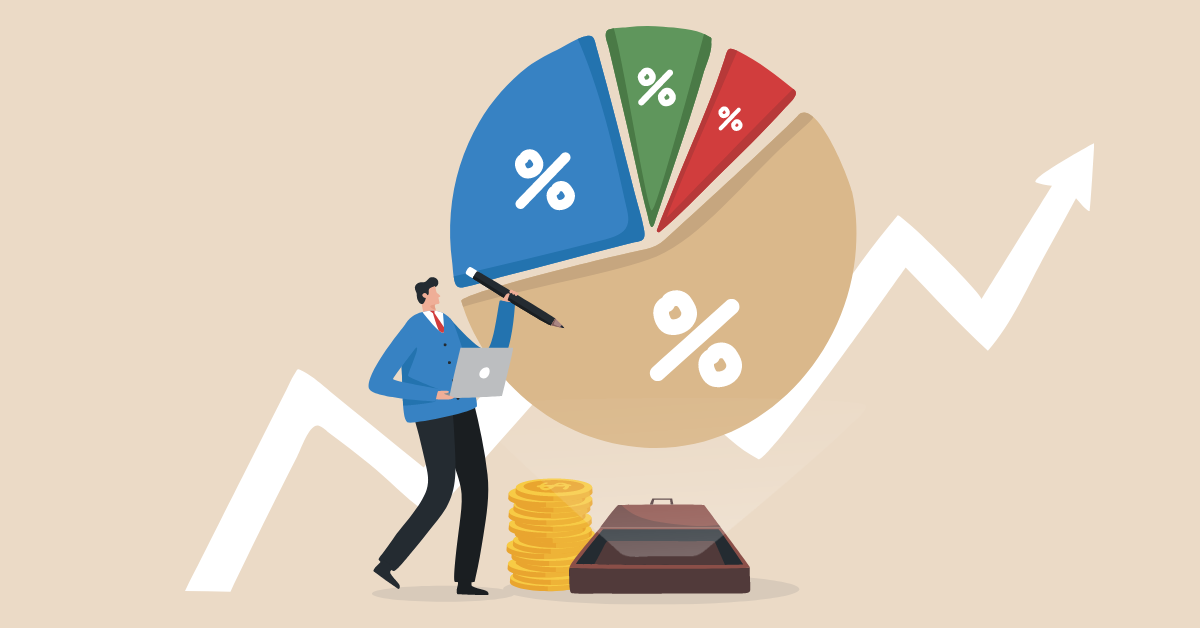Portfolio management is important for investors who want their investments to perform better than markets. The best way to maintain a portfolio would involve various elements like risk management and having a disciplined research process, among other things. You would need to monitor your portfolio’s risk levels, and asset allocation in addition to the returns realised and expected in the future.
This blog touches upon some of the important elements of portfolio management.
Do your investments match your risk profile?
What is a risk profile?
Your risk profile is an evaluation of the amount of risk you are willing and able to take. Knowing your risk profile is an important step in risk management. It allows you to limit the risk you are exposed to. If you decide to follow an asset allocation strategy, it will help you know how much exposure you need to each asset class (stocks, bonds, etc.).
Investor types by risk profile:
- Aggressive
- Moderately Aggressive
- Moderate
- Moderately Conservative
- Conservative
Nowadays, various asset management companies and brokers provide tools for the online assessment of risk profiles.
How risky are your investments?
It is important to know what the portfolio’s risks and returns are. You should attempt to know the overall risks and returns of your portfolio and not limit yourself to knowing the risks and expected returns from individual investments.
Risk profile-based asset allocation is a good way to control your portfolio’s overall risks.
How to reduce risk in your portfolio?
Lowering risk in your portfolio can be done through 2 methods. Firstly, you could address the risks in each investment and hedge against them. Secondly, you could focus on reducing the overall risk in your portfolio. Strategies to reduce risks in your portfolio include SIPs, diversification, focusing on liquid assets, and risk profile based asset allocation.
Hedging is a strategy to limit the amount of risk from an asset. Hedging is often described as placing opposite bets to reduce the amount of risk from your major bet.
Systematic Investment Plans (SIPs) involve making periodic installments of investments in an asset. SIPs free you from having to time the market and lower your investment cost.
Diversification means lowering your exposure to any single asset to reduce the risk. Even if you own different assets with the same level of risk, all of these assets might not fall simultaneously.
Risk profile based asset allocation dedicates portions of a portfolio based on the assumed risk in each asset class. The goal is to have a portfolio with an overall risk that you are willing and able to take.
Limit the amount of research you do
Every day there are various opportunities to make money in the asset markets. However, you may not be able to capture all of them. So, after a point, your investment research should stop. If you are investing based on your own research, you should come up and stick to an investment research process.
You should maintain a list of reliable sources to avoid information overload and avoid misinformation. To avoid being overloaded with information, you could make it a point to consume financial news only after certain intervals. Additionally, you could decide on when you would reassess your investment. You could reassess them periodically or based on their performance.
What is portfolio rebalancing? Why is it important?
Over time, the asset allocation in your portfolio may shift due to varying capital gains and different types of returns from different assets. Every asset class will have different levels and types of returns. Some might have high returns, and some might have low returns. These returns might be as an income or as capital gains. These differences can lead to shifts in asset allocations.
So, you might need to make trades and shift the asset allocation to your desired mix. Rethinking the asset allocation to each asset class and assets within them is called rebalancing your portfolio. Rebalancing your portfolio is important as it helps keep your portfolio in line with your risk profile. Also, rebalancing is useful in applying the changes of your investing style to your portfolio.
How often should you rebalance your portfolio?
Generally, rebalancing is done either periodically or when the asset allocation shifts. Periodic rebalancing might get investors to ‘over-manage’ their portfolios. So, you could make it a point to make periodic observations and shift funds only if the portfolio doesn’t suit your needs. If you follow an asset allocation strategy, you would need to rebalance your portfolio when the asset allocation shifts too much.
Final Thoughts
Managing a portfolio involves:
- Risk management
- Searching for investment opportunities
- Ensuring your investment portfolio is consistent with your requirements
You need to be mindful of your risk profile, risks your portfolio is exposed to, your research process, and your rebalancing strategy, among other things. While there are various online tools offered for all these steps, you should also invest in educating yourself about the financial markets.
At WealthDesk, you can invest in curated portfolios called WealthBaskets. WealthBaskets are created and managed by SEBI registered professionals. All underlying assets (stocks and ETFs) are transferred to your Demat account, and you rebalance with just one click!
FAQs
Portfolio management requires you to understand how much risk you are willing and able to take and how much returns you would need. Based on that, you would create and maintain a portfolio that gives you the desired risk to return ratio.
A growth portfolio would have a higher percentage of assets with higher growth opportunities. Typically, companies that haven’t reached their potential yet and are well-positioned in a growing market tend to be picked for growth investing.
The goal of portfolio management is to make sure your portfolio consistently gives you the desired returns at a reasonable level of risk.
You can rebalance your portfolio periodically or when the asset allocation shifts. When you decide on periodic rebalancing, you should avoid ‘over-managing’ your portfolio by avoiding unnecessary shifts.
Maintaining a portfolio involves monitoring your portfolio and ensuring you are getting the desired returns at a reasonable and tolerable risk level.


















